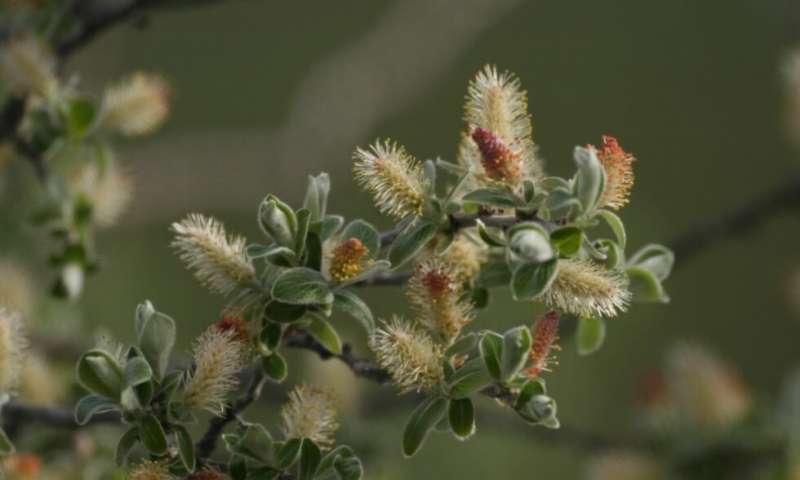As sea ice disappears, a greener and browner Arctic emerges

Arctic sea ice has been in steep decline over the past two decades. A study of tundra shrubs published today in the journal PNAS shows that as sea ice disappears, the Arctic is becoming both greener and browner.
Sea ice decline is a powerful driver of warming and precipitation changes across the Arctic, while tundra shrubs are climatically sensitive proxies of environmental change. Yet the role sea ice dynamics play in driving vegetation changes on land is relatively understudied.
Arctic shrubs are the most widespread woody plants in the Far North and, like trees in lower latitudes, they form annual growth rings. These rings can be measured under a microscope to reveal the history of past climates, as well as growth responses to the recent climate change so vividly present in the Arctic.
For the study, an international team led by Agata Buchwal at Adam Mickiewicz University in Poland gathered 23 shrub-ring chronologies and investigated their relationship to changes in sea ice extent, air temperature and precipitation. Their dataset included birches and willows from Alaska, the Canadian Arctic, Greenland, Svalbard and Siberia.
"Tundra shrubs will not announce the effects of climate change in the Arctic," Buchwal said. "Instead they patiently record their responses to change in their growth rings. And it is our task to learn from their records."

The study found that most Arctic shrubs take advantage of warming induced by sea ice decline and increase their growth. Yet a remarkable group of shrubs have progressively decreased their growth during the period of sea ice loss. Those shrubs tend to live in drier areas.
The findings hold local and global implications for climate change, including carbon uptake potential and albedo effects. Areas dominated by tundra shrubs experiencing increased growth may be able to take up and store more carbon. Meanwhile, areas of declining growth may experience more carbon loss to the atmosphere.
"Climate change is fundamentally altering the very character of the Arctic," said co-author Eric Post, a UC Davis polar ecologist and director of The Polar Forum, a program of the university's John Muir Institute of the Environment. "This work merges two areas of increasing focus in efforts to understand how: loss of sea ice and tundra shrub growth."
Explore further








 个人中心
个人中心 我的培训班
我的培训班 反馈
反馈












Comments
Something to say?
Log in or Sign up for free